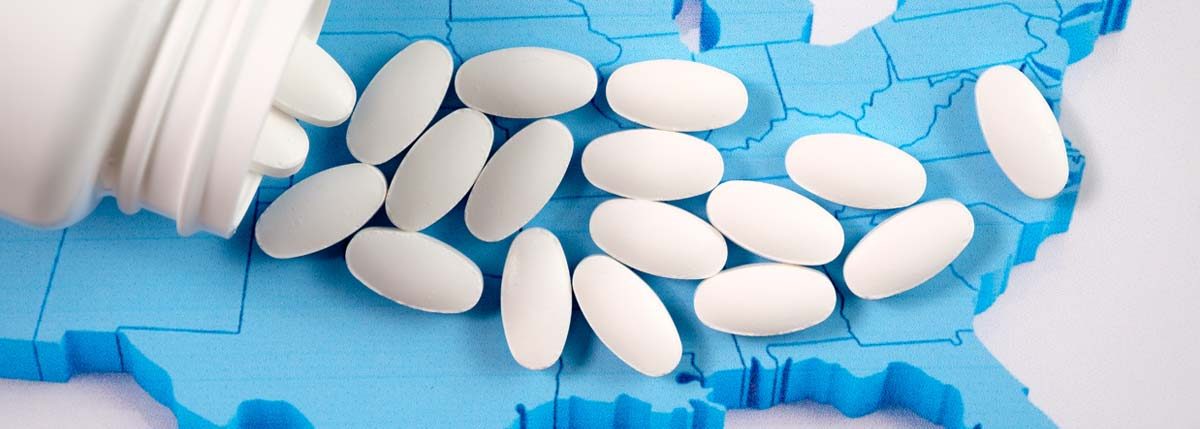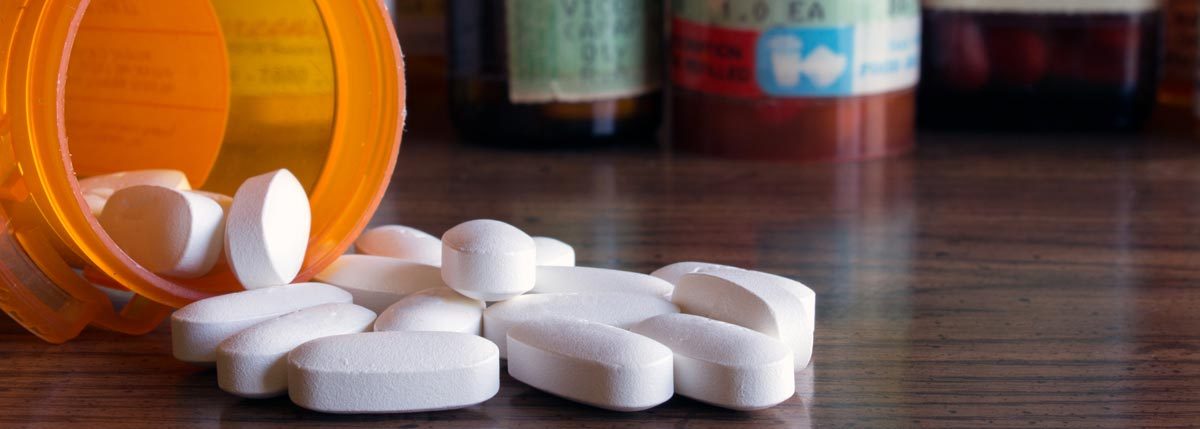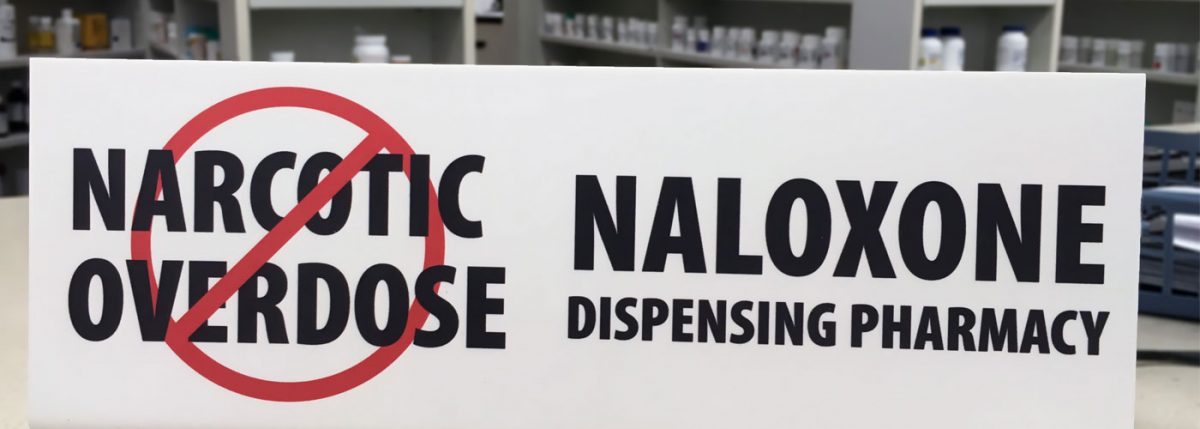Why do doctors prescribe opioids?
Opioid medications are intended to help patients relieve pain. Doctors prescribe them for a variety of reasons, including relief from acute pain resulting from injury or post-surgery. They also prescribe them to patients who suffer from chronic pain that can result from a wide range of sources. However, that is only part of the story. The opioid epidemic sprung from circumstances that go beyond simple treatments. A ProPublica investigation found that doctors have been effectively bribed into prescribing, and over-prescribing, opioid pain medications. Some pharmaceutical companies have been marketing opioids to doctors and including incentives for doctors who sold or prescribed the most product. When doctors sell a certain quota of opioid medications, they are invited to special luxury retreats in tropical locals. The doctors might present a paper, but other qualifications required are minimal. Over time, executives from various pharmaceutical companies have pled guilty or have been found guilty by juries of various crimes connected to this. The charges have stemmed from aggressive marketing programs that prompted doctors to over-prescribe medications. That is, doctors were enticed to write prescriptions for patients who might have done as well with a high-milligram dose of Ibuprofen or some other, non-addictive, pain medication.
What are some common names for opioids?
Prescription opioids come in a wide range of sizes and under many different names. Different brands are typically indicative of varying strengths. Some of the more common opioid prescriptions come under the following names:
Codeine
If you’ve ever had a severe cold or flu, your doctor may have prescribed a cough syrup with codeine. While this is considered a milder opioid, it is still addictive and poses an overdose risk.
Hydrocodone
This is commonly found under the brand names Lortab or Vicodin. When found in Lortab pills, it is paired with acetaminophen (Tylenol.) Since acetaminophen damages the liver, addicts often cap off their use at around 40 pills per day, as the pain from their liver prohibits a higher dose.
Hydromorphone
Commonly known as Dilaudid, this opioid often comes as in suppository form. Dilaudid is prescribed for mild to moderate pain.
Meperidine
You might find Meperidine branded as Demerol. It is commonly prescribed for severe acute pain, such as in the case of kidney stones.
Methadone
This opioid is addictive but is considered a mild opioid that can facilitate functioning among addicts while maintaining a minimal level of opioids in their routine. Though often used in a rehabilitative context, methadone can induce overdose and should never be used in conjunction with any other drugs. Benzodiazepines, alcohol, and other opioids should be avoided at all cost, lest a fatal drug interaction/overdose ensue.
Morphine
Morphine is prescribed for patients with moderate to severe pain. You might have seen or heard of surgery patients receiving a morphine drip in the form of an IV. The medication has an extended-release form which should be used with extreme caution as overdose can result when this form is misused.
Oxycodone
This opioid is often marketed under the names Percocet or Oxycontin and is prescribed for acute pain conditions. It is rather powerful and is recommended for moderate to severe pain. You might receive this medication for broken bones or during a post-surgery convalescence.
Oxymorphone
This opioid is sold as Opana, Opana ER, and Numorphan Hcl.
Fentanyl
This opioid is one of the most powerful and should only be prescribed for very extreme cases. It is approximately 50 to 100 times as powerful as Morphine. This painkiller is frequently marketed as a time-released transdermal patch. However, it is also found in pill or powder form, and heroin producers have been known to boost their product with this exceptionally powerful opioid. When Fentanyl is introduced to a batch of heroin, the overdose rate spikes for affected areas.
How big is the opioid problem?
This is a very difficult question, as statistics are difficult to track down. One of the only ways to track the opioid crisis is by the trail of overdoses, particularly those that result in death. Prior to an addict’s untimely demise, they might cause innumerable problems for themselves, their families, and their wider community. If they are lucky enough to enter a rehabilitation facility, addicts are protected under privacy laws so that it is still difficult to gain reliable numbers to help measure and track the problem. It’s even difficult to measure how many prescriptions are passing from doctors to users because the only data available is from Medicare Part D, which is only available to senior citizens and disabled people. Even when using these numbers, different agencies can have wildly different numbers for the same regions. According to a ProPublica report, one agency found the prescription rate of Piatt County, IL to be twice the state average. However, when the CDC examined Piatt County, they found that prescription rates were below the state average. When the CDC, for example, measures overdose rates the numbers can never be fully relied upon. That is, in order for a death to be counted as an overdose, the coroner or medical examiner must determine that opioids were the determining factor in the person’s death. Already we know that Rhode Island has under-reported opioid overdoses and it is far from certain that other states either have or have not reported accurate numbers. Furthermore, by the time an addict overdoses, they may have already passed on from prescription opioids to illicit drugs, such as heroin. Since heroin is often more powerful and far less reliable in terms of strength, the likelihood for overdose increases. If a person overdoses on heroin, they are less likely to be considered part of the problem surrounding prescription pain killers.
Aren’t illicit drugs like heroin the real problem?
Heroin has long been the scourge of the inner city. It is highly addictive and has many attendant problems that impact medical and social systems. Though Bayer originally designed it, it is now manufactured and sold primarily on the black market. While Heroin is a terrible problem, the new opioid epidemic has its roots in legal, pharmaceutical painkillers such as Oxycontin, etc. When a patient becomes addicted to their prescription medications, they are likely to seek relief on the black market once their doctor ends refills. While some addicts are successful in finding unethical doctors, who will refill their prescription opioid medications, most seek heroin or opioids on the black market if they cannot face the terrors associated with opioid withdrawal. Though both prescription and illicit opioids pose terrible overdose risks, heroin is perhaps even more troublesome. Since the FDA does not regulate the black market, an addict is likely to find drugs that are far more powerful or are mixed with other drugs, such as amphetamines, which add a risk of cross-addiction. In extreme cases, criminal dealers mix heroin with the pharmaceutical Fentanyl. The addicts whose tolerance is too low are subject to overdose and death while the addicts who survive the mega-dose are thrust even deeper into their addiction. Since heroin relies on the black market, its entire supply chain is rife with problems including money-laundering, violence, and even ties to darker crimes such as human trafficking. Thus, it is seen as more problematic. However, the heroin market has seen great expansion since the influx of addicts from the legal side of the opioid coin.
How does opioid addiction work?
Opioids not only help to ease or block pain, but they deliver a great deal of pleasure. This pleasure results from a rush of dopamine in the nervous system. Dopamine is a large part of our lives. It is often thought of for the extreme pleasure it can deliver, but it also helps you enjoy small things, as well. However, when you start using opioids, you begin to tamper with the normal equilibrium in your brain chemistry. Dopamine levels spike when you take your medication and effectively deplete your dopamine receptors over time. When you run low on dopamine, your body begins experiencing the phenomenon of craving. You suddenly cannot find any pleasure or contentment. You become irritable and inconsolable until you take your opioid prescription. Before long, the only possible form of relief is in the form of another pill. Unfortunately, this phenomenon begins to set in almost immediately. Depending on the strength of your first dose, you might experience some form of craving or withdrawal when your first dose wears off.
How do I know if I’m on the brink of addiction?
Addiction is a disease that tricks a person into thinking they don’t have it until it’s far too late. Thus, if you truly need to use opioid painkillers, keep a close eye on how much you are using. Since these drugs can be very disorienting, you might consider a pill organizer, so you are sure to keep track of what medicine you’ve used and which you need to take later. This is vital for older patients who might become confused and accidentally overdose. As for a growing addiction, be vigilant regarding your use. If you start needing an increased dose to manage your pain, you have a growing tolerance. Rather than feeding the need for more opioids, discuss the matter with your doctor. Increased tolerance is one of the chief warning signs of addiction. Note that if you start feeling a craving before your scheduled dose, you are stepping into addiction. A craving will take the form of obsessive thoughts regarding your drugs, rationalizations for increasing use, and even thoughts of how to obtain more drugs through some illicit means, such as doctor shopping. Be mindful of aberrant thoughts. If you find yourself thinking or behaving in ways that are not normal for you, it’s time to discuss the issue with your doctor.
Tell-Tale Signs of Opioid Addiction
Opioid addiction often sneaks up on its victims. You might start taking your painkillers as prescribed but before long, you find that you need stronger doses and then you can’t keep on the dosage schedule. When the cravings start, you don’t even notice them; you just have a feeling that you need a pill several hours early, then an additional one to go to sleep at night. Before long, you are desperate to avoid any withdrawal symptoms. There are many more signs of opioid addiction. Keep the following warning signs in mind for yourself or if a loved one has an opioid prescription.
- Simple, uncharacteristic mistakes
- Odd, inappropriate sleepiness and sometimes falls asleep, nods off
- Avoids social situations that used to give pleasure
- Unusual trips to the bathroom
- Leaves work or social gatherings early
- Suddenly experiences financial troubles
- Relationships begin to suffer
- Becomes defensive in light of the slightest criticism
- Loses job and cannot seem to find another
- Runs afoul of the law for petty crimes or bizarre behavior
- Excessive doctor or pharmacy visits
- Needle marks on the arm
- Bleary appearance while also scratching the face
- Perpetually broke and needing to borrow money while never repaying.
The above list is a brief overview of many symptoms that result from opioid addiction.
How do I avoid opioid addiction?
Diligence is key when it comes to avoiding opioid addiction. One of the first things you can do is to familiarize yourself with the various warning signs of addiction. If you are determined that yourself or your loved one is going to avoid this horrible disease, you will find that knowledge and education are absolutely vital to survival. Another part of diligence is making sure that you are prepared for a pain management routine. First off, you should educate yourself concerning the possible treatment routines. Learn everything you can about opioids and other pain management medications. You might be presented with a single solution where there may be options. If you are seeing a doctor for extreme pain, make sure that they thoroughly rule out all other forms of painkiller. Even if they insists that opioids are the best or only option, request an alternative such as a high dose of ibuprofen. See if you can manage your pain with something non-addictive first. You may have to live with a bit of discomfort for a while, but if your pain is expected to be short-term, such as a period of recovery from a surgery or injury, a little discomfort far outweighs a potentially deadly addiction. Not only can this help you avoid addiction, but the prescription will likely be cheaper, too. Plus, you won’t have any interference with daily activities such as driving or working, but please confirm this with a professional before operating heavy machinery. If opioids are indeed the only option, talk to your friends or family members about the situation. Keep a trusted loved one informed of your use, including how many pills are in your prescription and how often you are recommended to take them. A pill organizer will also be helpful, as opioids tend to disorient patients, and you might lose track of how many pills you’ve taken. This might feel like infantilization, but the addiction rates for opioid medications are far too high to gamble with. When you arise healthy and happy from a round of pain medications, you will be glad for whatever discomfort you’ve endured.
How Do I Get Help for an Opioid Addiction?
If you suspect that you have become addicted to opioids, please seek help immediately. The Substance Abuse and Mental Health Services Administration has a national hotline to help: 1-800-662-HELP (4357). As soon as you recognize that you cannot stop using opioids on your own, call the SAMHSA hotline or contact a trusted addictions specialist. You might try a local counselor or even your local hospital. If you are able, have someone drive you to a local detoxification center. While opioid withdrawal can be successfully carried out at home, there are dangers. The process is also extremely unpleasant and might even result in you returning to your drugs of choice. The risks are too high to go it alone. When you check into a detoxification center, you’ll find trained professionals who will deliver the best care. Furthermore, they will be able to help you find the best rehabilitation center. There are many different sorts of rehabilitation centers. The two general categories are in-patient and out-patient rehabilitation. There are also halfway houses and three-quarter sober houses. Depending on your local area, there may be many options. When you are weighing the options and making your decision keep in mind that the goal is not to find a comfy, cozy rehabilitation center. Rehab is not a vacation nor are centers anything like resort spas, though they might seem that way. Keep in mind that part of the root of addiction is escaping certain hard realities. Therefore, your recovery will likely include a re-familiarization with certain difficulties. In fact, your relative sobriety might be gauged by how well you manage your difficulties without resorting to popping a pill, snorting a powder, or injecting a potent brew. If at all possible, try to enter a rehabilitation center away from home. When you can totally immerse yourself in a rehabilitation culture, it has a greater chance of making a lasting impact. Being away from your usual surroundings will enable you to focus on the most important things: yourself and your sobriety. Your rehabilitation center will probably insist that you leave behind certain personal items such as your cellphone, pictures of loved ones, or other reminders of your outside life. Most patients are justifiably irritated at what is perceived as extreme measures, but it’s important to keep everything in its proper context. All of those creature comforts were a part of a life of addiction, one which only leads to jail, an institution, or death. Given that the rehab is an institution, there’s no need to see if you can make the trifecta. You should also seek out programs that last a minimum of 60 days. The 30-day model was based on a military standard and not anything to do with long-term sobriety. Studies have shown that the 30-day format is ineffective for any sort of long-term success. While you might feel that 60 days, or longer, is too long to be away from your life, consider that every day past 60 vastly improves your chances for a long life of happiness and sobriety. Though your family may dislike being apart for so long, they will surely appreciate your smiling face for a lifetime.



